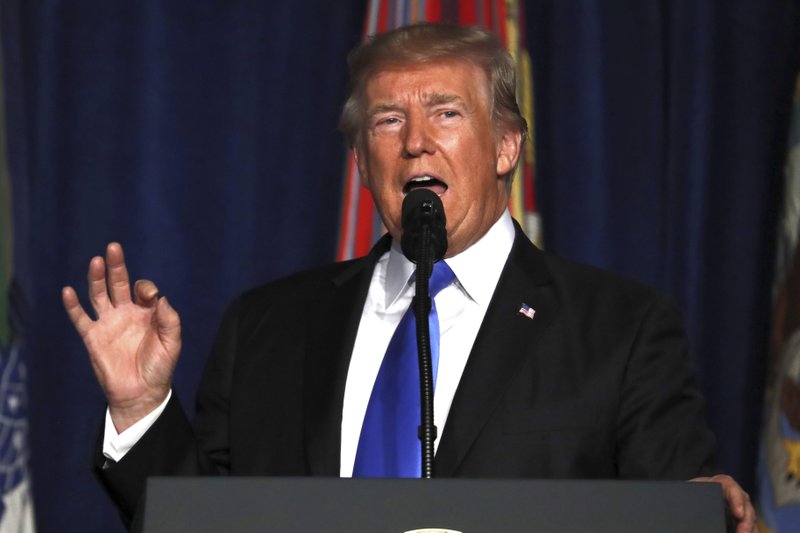WASHINGTON — President Donald Trump's plan to end the stalemate in America's longest war and eliminate Afghanistan's rising extremist threat involves sending up to 3,900 additional U.S. forces, senior officials said Tuesday. The first deployments could take place within days.
In a national address Monday night, Trump reversed his past calls for a speedy exit and recommitted the United States to the 16-year conflict, saying U.S. troops must "fight to win." He warned against the mistakes made in Iraq, where an American military withdrawal led to a vacuum that the Islamic State quickly filled.
Trump would not confirm how many more service members he plans to send to Afghanistan. In interviews with television networks Tuesday, Vice President Mike Pence similarly wouldn't give any clear answer. Instead, he cited Pentagon plans from June calling for 3,900 more troops.
"The troop levels are significant, and we'll listen to our military commanders about that," Pence said. "And the president will make that decision in the days ahead."
U.S. officials said there was no fixed number. But they said the Pentagon has told Trump it needs that many fresh forces in addition to the roughly 8,400 Americans in the country to accomplish Trump's objectives of "obliterating ISIS, crushing al-Qaida, preventing the Taliban from taking over Afghanistan and stopping mass terror attacks against America before they emerge."
The 3,900 figure includes a combination of trainers, security forces and other support troops, according to the officials, who weren't authorized to publicly discuss details about the the military planning and spoke on condition of anonymity. The exact number of arriving forces can vary as conditions change.
Defense Secretary Jim Mattis also declined to confirm an exact number Tuesday, saying he was waiting for more input from Gen. Joseph Dunford, America's top military official. Mattis said he will "reorganize" some U.S. troops in Afghanistan to reflect the new strategy.
The top U.S. commander for the Middle East said he expects the first reinforcements to arrive "pretty quickly," within days or weeks.
"What's most important for us now is to get some capabilities in to have an impact on the current fighting season," Gen. Joseph Votel, who spent last weekend in Afghanistan, told reporters traveling with him to Saudi Arabia on Tuesday.
Before he was a presidential candidate, Trump ardently argued for a quick withdrawal from Afghanistan and called the war a massive waste of U.S. "blood and treasure." On Monday, he suggested an open-ended commitment rather than a "time-based" approach.
"Conditions on the ground — not arbitrary timetables — will guide our strategy from now on," Trump said.
At its peak involvement in 2010-2011, the U.S. had roughly 100,000 troops in Afghanistan. President Barack Obama then started bringing them home, drawing criticism for the advance timetables he provided for his planned drawdown and ultimate withdrawal of forces.
Trump was among those who argued that Obama was aiding the enemy by telegraphing U.S. intentions. On Monday, Trump said he wouldn't discuss troop numbers, military tactics or timetables. "America's enemies must never know our plans or believe they can wait us out," he said.
Read Wednesday's Arkansas Democrat-Gazette for full details.
